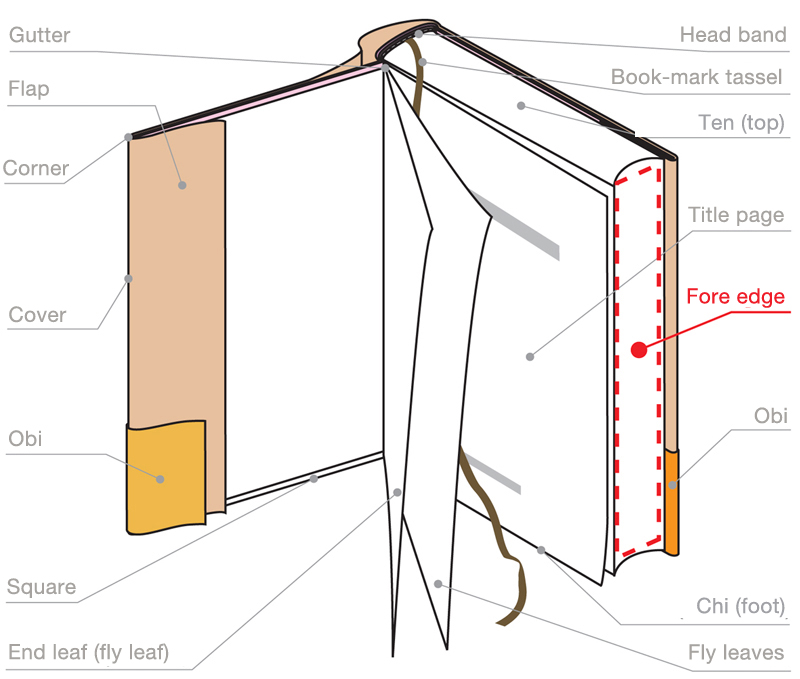Fore Edge
小口
Koguchi
CATEGORIES
The fore edge of a book, magazine or other bound publication is the transverse section on the side opposite the binding (spine).
The Japanese term, koguchi, essentially means transverse section. In the general book production process today, when a book is being assembled after printing, the three sides, not including the binding edge, are cut into shape (trimmed) and when this is done, the three surfaces are known as the fore edges. However, the upper and lower edges are often also called ten (head) and chi (foot) so the term, fore edge, normally refers to the side opposite the binding. Maekoguchi (face or front) is another term used as an alternative to fore edge. Fore edge in the context of gilt edging where the transverse section is adorned with gold leaf, refers to the three sides: face, head and foot. Many Japanese books are double-leaf so, in that case, the spine, upper or lower sections are considered to be the fore edge. If the spine is the fore edge, it is called the haisho in Japanese, if it is the upper section, it is known as the uwakoguchi, if it is the lower section, it is called the shitakoguchi.

